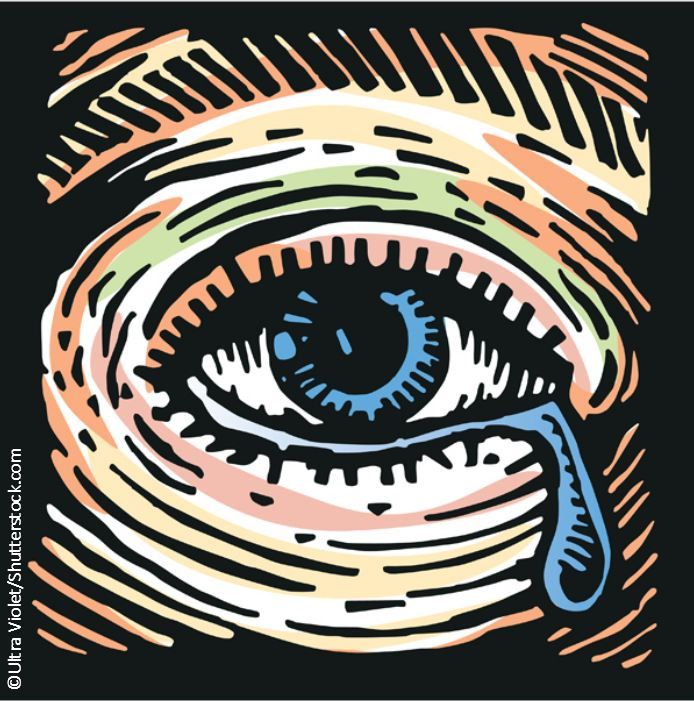Article
3 More New Things About MS (Part 2)
Author(s):
Can aspirin improve exercise endurance in people with MS? How best to treat children with MOG-Ab associated disease? What factors increase MS susceptibility?
©Sebastian Kaulitzki /Shutterstock.com

©Ultra Violet / Shutterstock.com

©Tongsai /Shutterstock.com

Risk factors for MS; aspirin and exercise endurance; and IV immunoglobulin in young patients with ocular complications of MS. Here are brief synopses of 3 more presentations from the 7th Joint ECTRIMS-ACTRIMS conference. (Read the first 3 summaries here.)
I. ASPIRIN IMPROVES EXERCISE ENDURANCE
Aspirin may represent an easy, economical treatment to enable MS patients to gain the benefits of exercise.
A double-blind, randomized, placebo-controlled, crossover trial studied whether aspirin can improve exercise performance and attenuate exercise-related body temperature increase in 12 MS patients. Eight of the 12 patients reported overheating during exercise. All patients completed 2 maximal aerobic exercise sessions and received either a standard dose of 650 mg aspirin or placebo. After 1 hour, participants performed a progressive ramped exercise test with a lower-body cycle ergometer.
Exercise performance improved after pre-treatment with aspirin as compared to placebo, and the effect of aspirin was larger among the heat-sensitive patients. Exercise-induced body temperature increase did not differ between the treatment group and controls. However, the heat-sensitive subgroup had a 56% attenuation of body temperature increase after exercise with aspirin.
Clinical Implications?
Cooling treatments, such as cold bath pre-cooling and vacuum hand-cooling chambers, have been proven to be effective in MS patients. The antipyretic effects of aspirin make it a convenient, inexpensive, readily accessible, and unobtrusive method of body cooling for MS patients, allowing them to exercise to their full capacity.
Aspirin improves exercise endurance in multiple sclerosis: Pilot findings from a double-blind randomized placebo-controlled crossover trial
ECTRIMS Online Library. Leavitt V. Oct 26, 2017; 200459
Discussion continues on the next page.II. INTRAVENOUS IMMUNOGLOBULINS TREAT YOUNG MS PATIENTS WITH EYE COMPLICATIONS
Young MS patients with relapsing myelin oligodendrocyte glycoprotein antibody (MOG-Ab)-associated disease respond better to treatments with IV immunoglobulins (IVIG) than to conventional MS therapies.
A retrospective, multicenter study identified 102 children whose original diagnoses were neuromyelitis optica spectrum disorder (43.1%), multiphasic disseminated encephalomyelitis (19.6%), and relapsing optic neuritis (17.6%). A total of 464 demyelinating events were reported. Clinical events in children under the age of 9 years were more likely to affect the brain; those in children over age 9 were more likely to affect the optic nerve.
Half of the children received disease-modifying drugs (DMD): 28 patients were treated with 1 DMD, 16 patients with 2 DMDs, and 7 patients with 3 or more sequential DMDs. The treated group had a more severe phenotype than the untreated group, with higher total number of relapses and Expanded Disability Status Scale (EDSS) at last follow-up.
Interferon-beta and glatiramer acetate did not lead to changes in relapses frequency and EDSS. Annual relapse rate was reduced slightly with azathioprine, mycophenolate mofetil, and rituximab, but the EDSS remained stable with these DMDs. The 12 patients who received regular IVIG treatments showed significant improvement in ARR and EDSS.
Clinical Implications?
IVIG, a B-cell targeted treatment, led to a significant reduction in relapse frequency among children with MOG-Ab associated disease.
Disease course and immunotherapies responses in children with relapsing myelin oligodendrocyte glycoprotein antibodies (MOG-Ab)-associated disease
ECTRIMS Online Library. Hacohen Y. Oct 26, 2017; 199968
III. CIGARETTES, VITAMIN D DEFICIENCY + GENETICS INCREASE MS SUSCEPTIBILITY
Cigarettes pose the highest risk for MS-a risk that significantly increases with vitamin D deficiency along with the presence of a certain gene.
A study of 149 MS patients and 149 healthy age-matched and sex-matched controls analyzed the relationship of the presence of the allele HLA-DRB1*15:01, vitamin D deficiency and cigarette smoking with MS susceptibility in 3 independent cohorts from Spain. Of the more than 100 genetic loci implicated in susceptibility to MS in European populations, the HLA-DRB1*15:01 allele is the most prominent.
The strength of association between variables was measured by calculating the odds ratio. A multivariate logistic regression model controlled for potential confounders, such as age and gender.
The results show the presence of HLA-DRB1*15:01 allele (OR=2.60), smoking (OR=10.22) and vitamin D deficiency (OR=3.60) were significantly associated with the risk of MS.
Clinical Implications?
Both environmental and genetic factors should be taken into consideration when establishing a patient’s risk for MS.
Environmental and genetic factors in MS susceptibility in Spain
ECTRIMS Online Library. Pinto-Medel M. Oct 27, 2017; 200660



